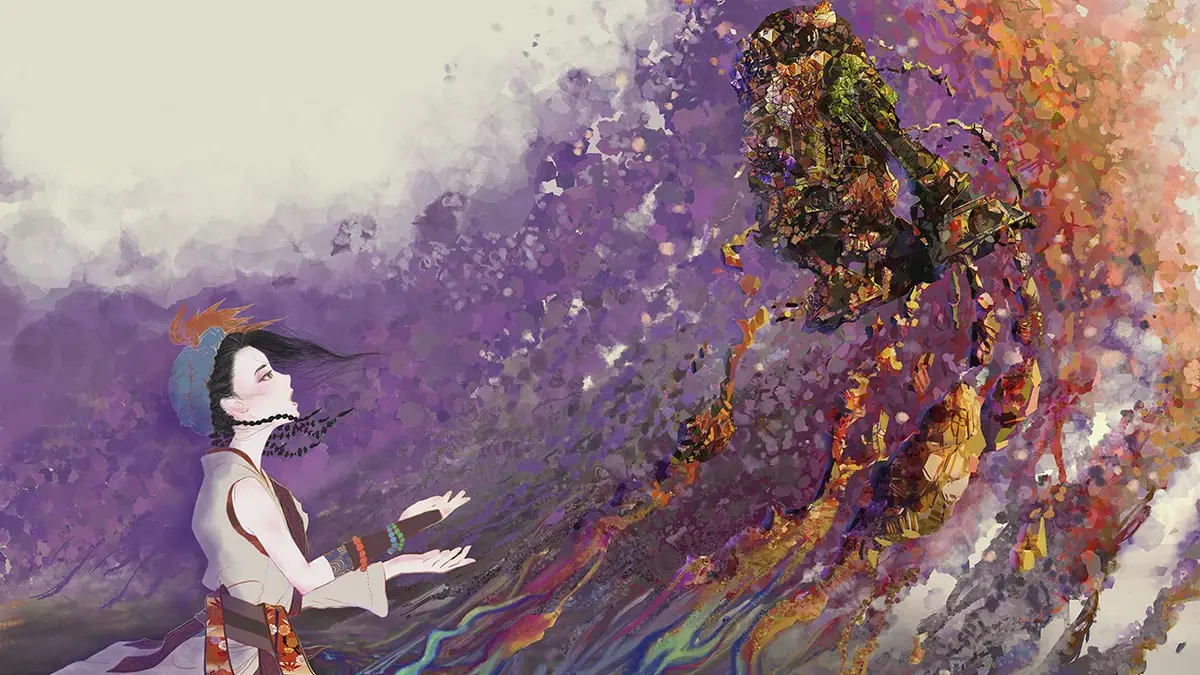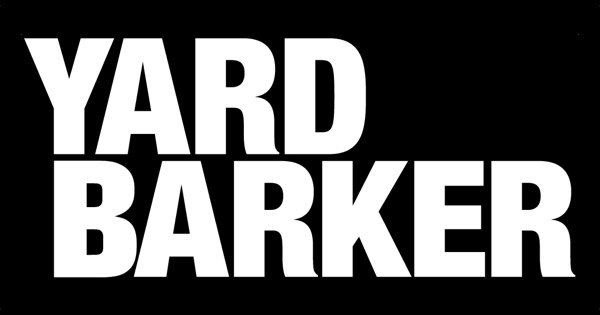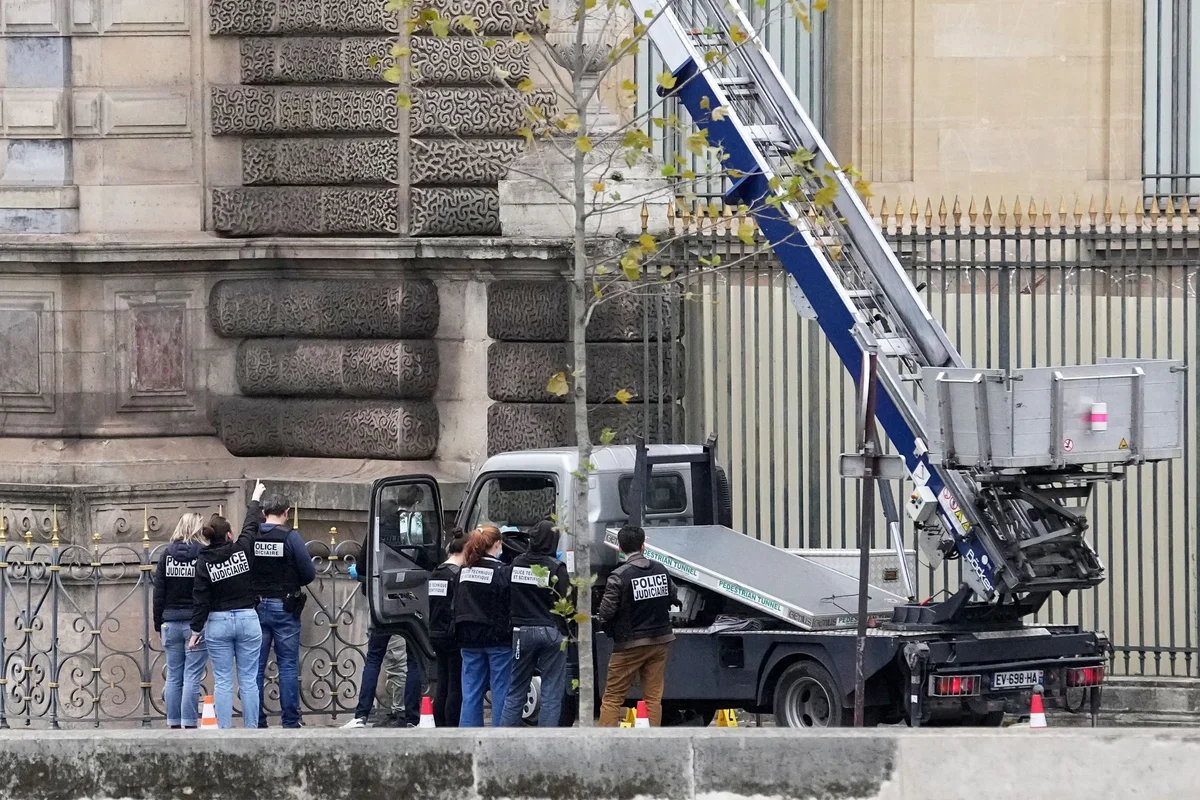Copyright Polygon

Star Wars: Visions made a triumphant return this year, bringing nine new episodes of epic, sci-fi adventures set in the Star Wars universe from a handful of anime studios while picking up some of the most intriguing stories from season 1. As a huge Star Wars fan, Visions is one of my favorite projects because it perfectly conveys what makes the franchise so special: how each fan experiences its story in different ways. That’s why The Bird of Paradise, a 3D-animated short from Polygon Pictures and director Tadahiro Yoshihira, instantly stuck out. The story of a hot-headed Jedi Padawan who becomes blinded in battle and must undergo a series of spiritual trials to overcome the temptation of the Dark Side borrows liberally from Japanese mythology. Our hero navigates a fantastical vision of the world as perceived by her Force powers, giving the episode a stunning and unique visual style. Polygon Pictures previously contributed to the CG-animated series The Clone Wars, but while there are some visual similarities between that show and The Bird of Paradise, Yoshihira tells Polygon via email that none of the studio’s staff members worked on both projects. "While I was conscious of incorporating various elements from the broader history of Star Wars in a metaphorical way, we aimed rather to achieve an unprecedented originality worthy of the Visions anthology," he says. Polygon spoke to Yoshihira about the various inspirations behind The Bird of Paradise and what a sequel to the Star Wars Visions short might explore. Polygon: The visuals in the episode are striking and beautiful. How did you come up with some of them? What were you inspired by? Tadahiro Yoshihira: The main theme of the visual expression, in this short, was “to visualize the Force as an image.” In addition, I wanted the image to be not only a visual expression or beauty, but to be a stage device that would strengthen the “storytelling” and clearly convey the heroine’s emotions, while the psychological developments within the drama and the fantastical world shaped by the Force interact and create a chemical reaction. Also, in the conventional understanding of the Force, Midi-chlorians are interpreted as “microscopic intelligent lifeforms that dwell within the cells of all living beings.” Building on that, I decided to depict all “unreal phenomena”, by fusing the story’s attribute with the idea of Midi-chlorians, as “aggregations of minute particles and inorganic matter”, including the faint, vanishing imagery of a blind world. Furthermore, I came up with the idea of presenting them on screen as beautiful works of art, rather than VFX images. The way the Force appears and the world seen through it changes according to Nakime’s psychological state. In order to portray the various fantastical worlds that unfold day by day within this story, and to capture the high artistry and beauty within them, we drew immense inspiration from master paintings all over the world. Those visuals, however, originated in a concept of the narrative point of view. The Sith character in this story is particularly frightening. How did you come up with her design? The characters in this story were drawn from ancient Japanese folktales and mythology. As for the Sith, while working on the script, we set our sights on “Amanosagume”. She is a goddess from Japanese mythology, said to be the origin of the “Amanojaku”: the mischievous demon that appears in many folktales. Her nature fit perfectly with the role of the Sith in this story. Building on that idea, we decided to merge the culture and species of the Star Wars universe with a Japanese “Amanosagume” design. Art director Kazuma Teshigawara expanded upon the image of the “Oni”, the horned demons widely known in Japanese folklore. And in the finer details, he incorporated elements such as Sith tattoos blended with “Kabuki makeup” and “kumadori” patterns. From a Western perspective, he also infused motifs of the Joker and skulls symbolizing death, as well as aspects drawn from Japanese esoteric Buddhism. His designs are fascinating. The episode sometimes feels like a Buddhist parable. Was that intentional? Were the quotes that are woven in pulled from an existing text? While some parts were inspired by “ancient Japanese folktales” and “Japanese mythology” as an origins of ideas, I never intended to treat those as sacred texts or as a philosophy for this world. The Star Wars universe already possesses its own culture and philosophy through the Jedi, and I didn’t want this short movie to lean toward any specific sense of value. When I wrote the story, I based my storytelling on Joseph Campbell’s The Hero with a Thousand Faces. I chose to focus particularly on the ancient “animism” that has existed throughout Japan since antiquity, and sought to explore the commonalities and universality shared among mythologies and philosophies across the world. With that foundation, rather than grounding the work in a specific belief system such as Buddhism, my goal was to create something truly fitting for the Star Wars universe; something that embodies the universal and primordial values found at the intersection of countless cultures and human histories. In the texts that appear within the short, I drew upon overlapping ideas from sources such as Genesis, Japanese mythology, the Five Elements (Wuxing), the Five Desires (Five Dusts), and the Seven Deadly Sins. The language was intentionally written from a highly elevated, almost mythic perspective, observing a single human being, Nakime, from a cosmic viewpoint, so the words would naturally reflect her state of being. If some viewers sense a Buddhist parable in that, perhaps it’s because, as Japanese who were born and raised in Japan, those Eastern sensibilities naturally surfaced from within us. Or perhaps, it’s the voice of the toad; one of the “yaoyorozu-no-kami” (eight million gods) dwelling by the waterfall. Some of the stories in Star Wars: Visions season continue from season 1. Do you have an idea about what is next for the characters? Is there a possibility that your story could continue in the future? I do have a vague idea, if Nakime’s journey were to continue. It wouldn’t be about her regaining her sight, but rather about exploring the contrast between Nakime, who lives by perceiving and resonating with the world through her heart under a unique set of rules, and those who understand the world through visual information. I’d like to make that difference in perception, in the way truth is felt, the creative starting point for a new story. The gaps born from differing ways of understanding the world, and the resulting differences in values, would likely present new trials for a still fragile and immature Nakime, who has only just reached a slight enlightenment in this short, as well as for those around her. If I ever have the opportunity to create a sequel thanks to everyone’s support, I would love to take on that challenge. Star Wars Visions season 3 is streaming now on Disney Plus.



